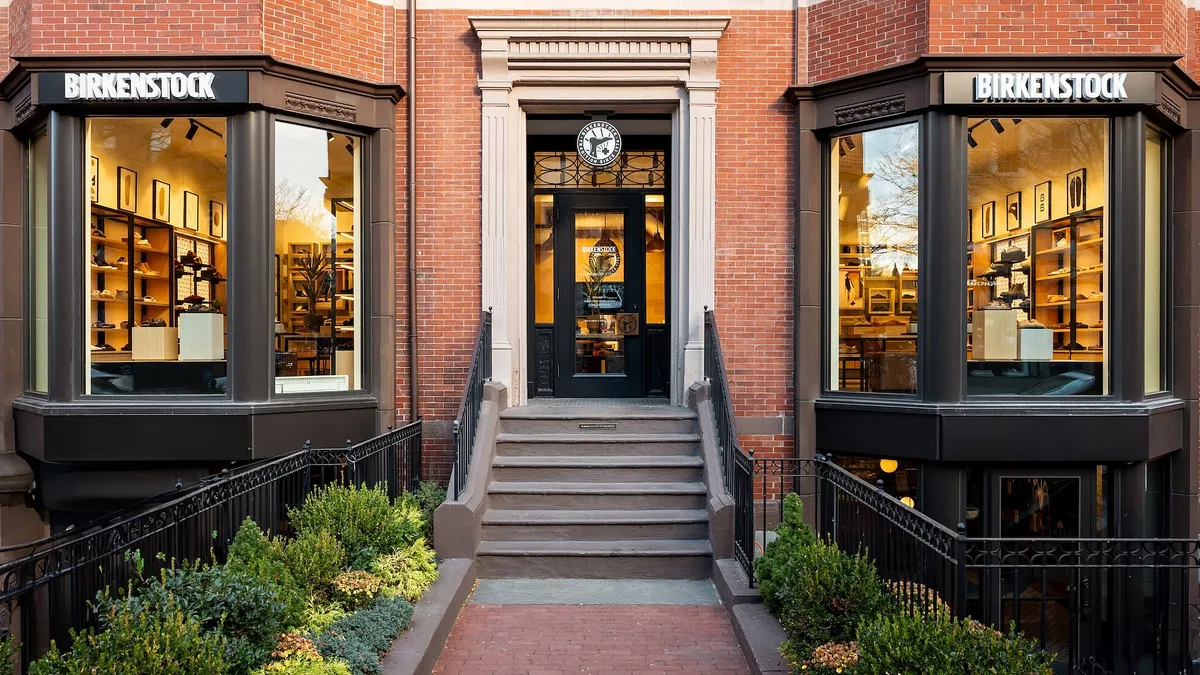Sears Holdings and J.C. Penney share a lot in common, most notably many of the same troubled malls where they operate stores.
Sears had long been the larger department store chain, the more expansive in scope and the retail giant casting the longer shadow. But over the past decade, as Sears' footprint shrank at an astonishing pace, their sales grew closer together (though Sears' remain larger by several billion dollars). Problematically, they both also carry large debt loads that have strained the bottom line and worried investors.
Now, as Sears plans to close another 142 stores in bankruptcy, J.C. Penney has both an opportunity and a challenge in front of it. Sears' Chapter 11 throws Penney's own financial challenges into sharp relief as the company's turnaround slogs on and a new team of executives take over — led by new CEO Jill Soltau, formerly of Joann — who will no doubt be under pressure to change the narrative at the retailer.
The main challenge arising out of Sears' fall into bankruptcy is that Penney has already struggled with discounting, and now it has to price against yet more Sears going-out-of-business sales. As analysts at Morgan Stanley led by Kimberly Greenberger put it in an Oct. 11 client note, "Near term, if [Sears] decides to close additional stores and/or engage in liquidation sales, retailers operating in the corresponding trade areas could experience some short term pressure."
The analysts noted, however, that Sears was closing stores by the hundreds well before bankruptcy (835 Kmart locations and 335 Sears locations over the past five years, according to Morgan Stanley). Moody's Vice President Christina Boni said in emailed comments that the "absorption of the Sears' softlines product to be closed initially should be manageable for other softline competitors in the coming months."
Surviving the discount onslaught
Penney's ability to weather Sears liquidation sales and capitalize on the latter's further decline — if not total liquidation — could prove critical as Penney tries to improve its own sales.
It's also worth noting that Penney has been downsizing as well, giving up not only top-line sales but also market share in the process. Between July 2017 and Aug. 4 of this year, Penney closed 146 stores, according to securities filings.
According to data provided to Retail Dive from analytics firm Earnest Research, Penney's market share (including in e-commerce) in areas where it closed stores has dropped from 11.3% in July 2016 to 6.9% in September 2018. (This followed a brief spike to more than 16% share in mid-2017 while Penney was holding liquidation sales.)
During that same time, off-price TJX Cos. stores and department store rival Kohl's both gained about 4% market share in areas where Penney closed stores. Across the country in aggregate, Penney has held a fairly steady market share, according to Earnest Research. That implies the retailer has lost a fair amount of customers to rivals where it has closed stores, rather than shifting them to nearby Penney stores or to its website.
It also implies that Penney faces many of the same constraints that Sears did in managing its footprint and bottom line. Sears has undergone massive waves of store closures in recent years in cost-cutting efforts meant to stem its financial bleeding. If customers had kept shopping the company's website and nearby stores as Sears did so, maybe those efforts would have succeeded in keeping the company out of bankruptcy. But Sears has also suffered dramatic same-store sales declines over many of the same periods, accounting for as much as a third of top-line sales drops in some periods.
For whatever it's worth, Penney closures have done nothing to help Sears. The latter has lost 4.5% market share in areas where Penney closed stores, according to Earnest Research.
The appliance play
Conversely, Penney has chased sales that Sears has "donated" (the preferred term used by Penney executives) to the market. Specifically, the retailer, typically focused on apparel — especially women's apparel — has gone after Sears' appliance sales.
Penney posted double-digit comps in its home segment every quarter last year, thanks to a "strategic decision," in then-CEO Marvin Ellison's words, to dig deeper into the category. The move included an expanded assortment of appliances, mattresses, furniture, workwear and installations.
The strategy was one of opportunity. In March, Ellison said his company had identified 300 malls where it planned to "aggressively pursue this unprecedented sales opportunity in 2018." In a May conference call, Ellison said Q1 appliance comps grew 15%. The next quarter, executives said comps were "down slightly."
Not everyone has seen wisdom in Penney's appliance play. "Their rationale is, 'Well, Sears is failing, and Sears is in malls and we're in malls, so we're going to get some of those sales,'" Nick Egelanian, president of retail development consultants SiteWorks International, told Retail Dive in an interview this summer. "Guess what, guys, Sears has lost a lot of that business already, and guess who got it: Home Depot and Lowe's. And if Sears is going to lose more of that business, it's going to go to those guys."
'Donated' customers
Generally, though, Penney may have an opportunity to pick up some customers and sales that might have gone to Sears as the latter closes stores.
"[I]n the medium to long term, we expect JCP along with the other retailers in the respective trade areas could potentially benefit from these closures, as they could service existing [Sears] shoppers," Morgan Stanley's Greenberger said. According to Morgan Stanley data, Penney has the highest store overlap with Sears (including Sears, Kmart and Sears Specialty stores) among other large retailers the analysts cover, with 50% of stores within a quarter mile and 60% of stores within half a mile.
Looking at shopper overlap data, Cowen and Co. analysts led by Oliver Chen found that 55% of Sears shoppers also shop at Penney. That could mean Penney has opportunity to raise its comps by 1.7% should Sears liquidate its entire business, according to Chen.
Is it enough?
The opportunity would seem large for Penney, but so are the stakes. The retailer, which carries nearly $4 billion in debt, went through a round of credit downgrades this year following consecutive quarters of disappointing operating results and few signs of the trajectory changing in the near term.
Philip Emma, a retail analyst with Debtwire, pointed out in an Oct. 4 report that Penney's credit metrics are in healthier shape than others in the sector, but he did note that company's leverage per square foot has increased 59% from the dismal years of Ron Johnson's stint as chief executive. Emma also points out that one of the retailer's main advantages, its Sephora locations, account for only about a tenth of the space inside a Penney's store, which run on average of 109,000 square feet.
Even with the company's addition of appliances and Penney's "standard retail speak of focusing on selection and private label," Emma said that "sales are at best flat on a same store sales basis, gross margin levels are falling, and its SG&A decrease hasn't kept pace with the decline in gross margin dollars even after the closure of 14.4% of its stores in the last year."
While the company has a lot of debt, Penney also has some major assets left, including owned real estate, that could keep bankruptcy at bay and influence the strategy for the new leadership team. Emma noted a Cushman and Wakefield valuation of Penney's real estate that put it at $3.1 billion.
"As Eddie Lampert has shown over the last several years with Sears, there is value to be extracted from an asset-rich company, provided of course one is willing to completely ignore traditional metrics like same store sales," Emma said.






















